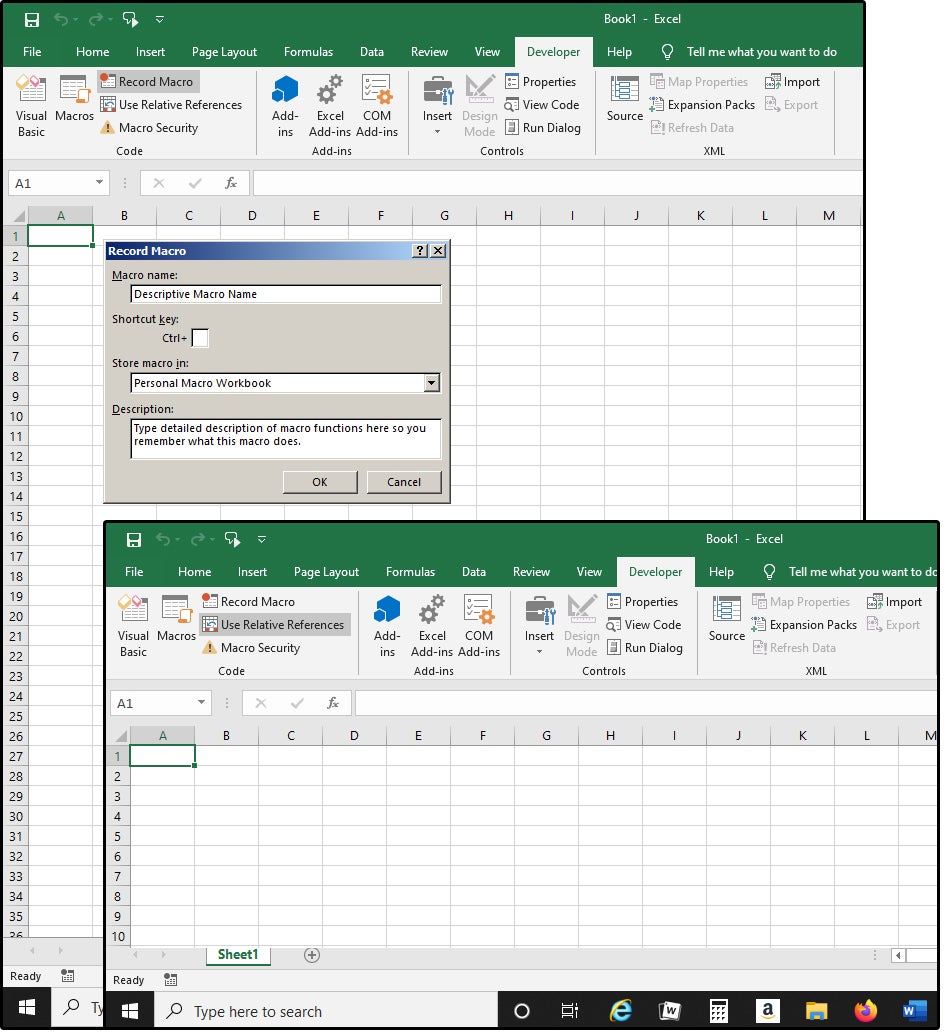5 Simple Steps to Save Macros in Excel

In today's data-driven world, Excel remains an essential tool for professionals across various industries. Its ability to automate repetitive tasks through macros can significantly boost efficiency and accuracy in data manipulation. However, knowing how to save these macros properly is crucial for reuse and sharing with colleagues. In this post, we will explore the 5 simple steps to save macros in Excel, ensuring you can streamline your workflows seamlessly.
Step 1: Enable the Developer Tab

Before you can save or record a macro, you need to ensure that the Developer tab is visible in your Excel ribbon. Here’s how you can activate it:
- Go to File > Options.
- In the Excel Options dialog box, select Customize Ribbon.
- Check the box next to Developer in the list of main tabs, then click OK.
💡 Note: The Developer tab provides access to many advanced features in Excel, including those for VBA (Visual Basic for Applications).
Step 2: Record a New Macro

With the Developer tab enabled, you can now record your macro:
- Navigate to the Developer tab and click on Record Macro.
- Name your macro, assign a shortcut key if desired, and select where to store it. For personal use, choose “This Workbook” or for sharing, opt for “Personal Macro Workbook”.
- Perform the actions you wish to record, then click Stop Recording when done.
📌 Note: Remember to choose a unique shortcut key to avoid conflicts with existing Excel commands.
Step 3: Save the Workbook as Macro-Enabled

After recording your macro, it’s vital to save the workbook in a format that retains the macro:
- Click File > Save As.
- Choose Excel Macro-Enabled Workbook (.xlsm) or Excel Binary Workbook (.xlsb) from the “Save as type” dropdown.
- Provide a name for your file and click Save.
Step 4: Accessing and Editing Your Macro

To view, edit, or run your macros:
- In the Developer tab, click Macros. Select your macro from the list and choose Run or Edit.
- To edit, the Visual Basic Editor will open where you can modify the VBA code as needed.
🛠️ Note: Be cautious when editing macros, especially if you’re not familiar with VBA. Always back up your work before making changes.
Step 5: Sharing Macros

When you want to share your macros:
- Ensure the workbook is saved in a macro-enabled format as mentioned in Step 3.
- If you’ve stored macros in the Personal Macro Workbook, share this file along with your workbook. Alternatively, you can provide instructions to import the macro into their Personal Macro Workbook.
Additional Tips for Macro Management:

- Organize your macros by using comments in the VBA code to explain complex or non-intuitive parts.
- Use the Organizer tool under the Developer tab to copy macros between workbooks if you need to consolidate or transfer macros.
In wrapping up, understanding how to save macros in Excel is pivotal for anyone looking to enhance their productivity through automation. The journey involves enabling the Developer tab, recording your macros accurately, saving the workbook in the correct format, and managing or sharing these macros effectively. Following these steps ensures that you can use and distribute macros efficiently, reducing manual work and allowing for greater focus on analytical tasks. By mastering these foundational steps, you’re not only saving time but also setting a platform for advanced Excel usage, including complex data analysis and automation workflows.
Why do I need to enable the Developer tab to save macros?

+
The Developer tab is where you can access tools like the Macro Recorder, VBA Editor, and other advanced Excel features that are not available by default in the standard ribbon for security and user experience reasons.
Can macros be saved in any Excel file format?

+
No, macros can only be saved in certain macro-enabled file formats like .xlsm (Excel Macro-Enabled Workbook) or .xlsb (Excel Binary Workbook). Standard .xlsx files do not support macros.
What happens if I forget to save my workbook as macro-enabled after recording a macro?

+
If you save your workbook in a non-macro-enabled format like .xlsx after recording a macro, Excel will prompt you that macros cannot be saved in this format. You must choose to either save without macros (losing them) or choose a macro-enabled format.